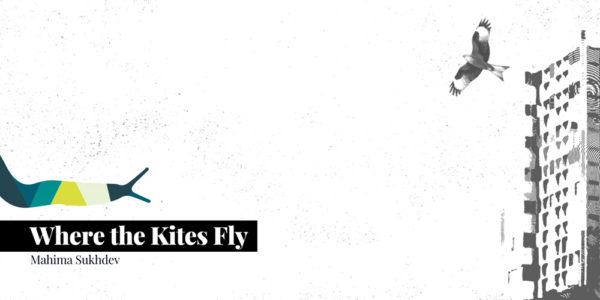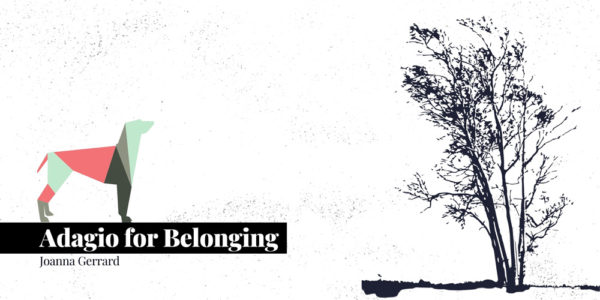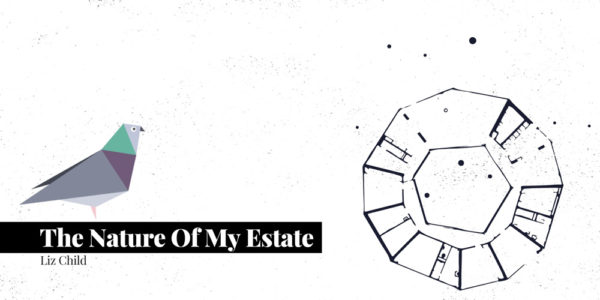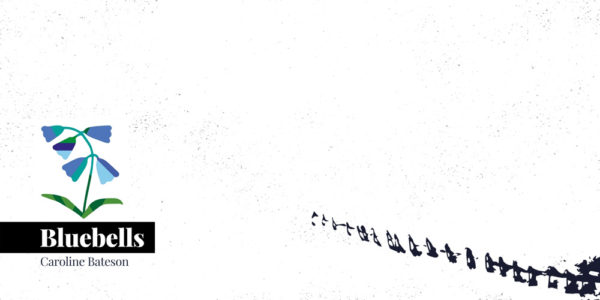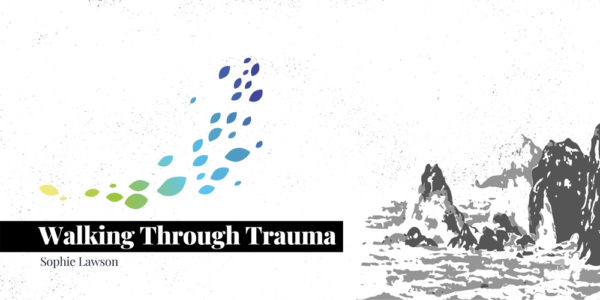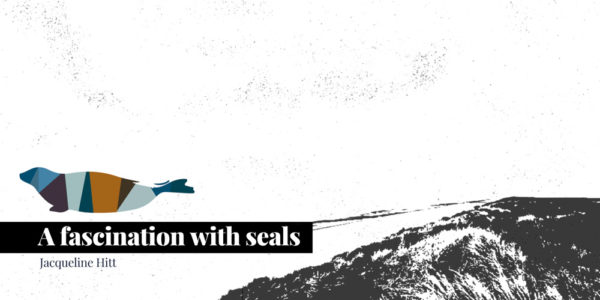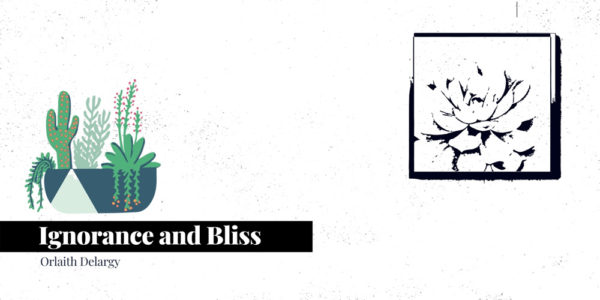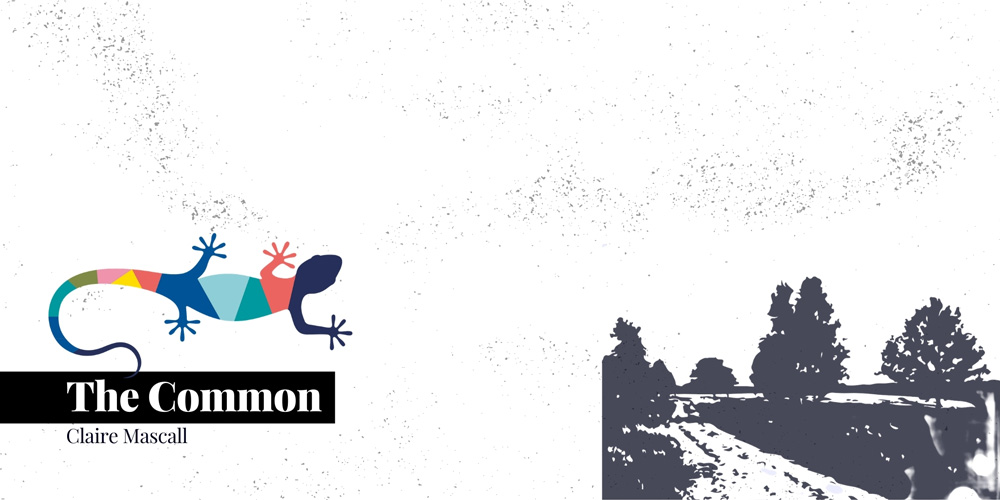
I was five years old when I first padded onto the peach carpets of my grandparent’s new house. Stepping out onto the back patio, I saw that the house was edged on two sides by dense strips of mature woodland; oak, hazel and holly. The garden felt to my small self as if sunk in a towering, tree-flickering wilderness. Shortly after this visit there began a slow unravelling of all that was permanent to me when my mother became ill, step by excruciating step.
One morning the following year, I was woken early by my father’s voice on the phone to my grandmother: “All right Mum, we’ll come over now”. It was five o’clock in the morning. As I stepped into my grandparents’ now-familiar house I could hear the distant sound of crying at the dining room table. After having been refused permission to clear a section of the woodland that surrounds the house, the landowner had brought in a team with chainsaws to cut down a copse of oak trees. They had arrived at dawn so that they could not be stopped. The situation appealed vividly to my desperate, six-year-old’s understanding of the unfairness of the world; of land ownership, and of the inability of trees to harden their bark against the loud, screeching chainsaws that we could hear in the background.
Three years later, my grandfather died suddenly, on the same awful day that my mother and father were told that there was nothing more that could be done to save her. Five years on, when I was fourteen, my father, brother and I moved into my grandparents’ house, still backed by a dense strip of copse down one side. Soon after we moved, I left the house, alone, for the first time. A few hundred yards down the road and the road became a track, before the track became a squashy path of wet sand, black as treacle.
The path forked and I experienced mild elation, as a young woman who had not yet been able to choose a route to walk alone in relative wilderness, at the freedom of deciding which fork to take; the one under the glossy, shady holly tunnels to the bridge, or the red, sandy serpent through hulking gorse. I chose the latter, and as the path humped over the roots of a skewed oak tree I noticed how the sand granulated from red to the grey of dark steel. In this slowed act of ‘noticing’ I felt a faint rip, a pull of the muscles around my ears as I relaxed, and my shoulders balanced weightily toward the ground.
I stepped from the winding path densely packed each side by gorse and pine, out on to the expansive vista of heathland. Gradients of colour and hue lapped as if paper-made in layers ahead of me, Blackdown inked steep and permanent in the distance. My lungs filled with the sweet air and it felt as though it was my first breath.
It was late June and the heather was black and strong, gathering strength for August when the flowers beat into their vibrant capsules of purple, pink and white. The black, claggy sand under the heather seemed as a sink to absorb the churned, blackened feelings in my stomach that had sat with me during lessons that day; I felt lightness. I was fourteen years old, and my dear, beautiful mother had gone.
Every day I grew up more. I became different and more able to understand, and I could not comprehend it; I could not settle with what I had lost. At home, we talked of her often, and we grew with the happiest memories of her. Left unspoken was the terrible, debilitating decline of her illness and what it did to her, what it did to us; for each of us a uniquely acute pain.
I turned right, along a wide track lumped with creamy rocks. Squirrels galloped low to the ground, in and out of the woodland on each side of the track. Just before the track curved a tall, impossibly lent white poplar scooped my eyes upwards to its crown; three-lobed spades fluttered white-green up and down the trunk, marked by spots in perfect, dark brown lines. I wondered whether the tree was diseased, or had been vandalised.
Over the next years I often cycled to school along the track that wound through the heaths and forests that made up the common. I saw the dotted poplar grow, and shed its leaves, and grow again, and I learned about its bark and its unusual markings.
It was a long way to school so I cycled fast. Speeding through the seasons I saw, in order, profusions of green, crackles of colour, how the black sand hardened as crystal, and the cold, dead sound it made when I cycled over dry branches hidden in the leaf litter. In winter, rain, sleet and snow drifted over the heath and solidified the black, peaty water to thick, glassy craters among the wrought iron spindles of the heather plants. My father, brother and I spent hours of hilarity skating across these frozen pools, falling, laughing, holding on to each other; recovering in the mist.
When winter was over, school friends joined me in watching sand lizards that warmed themselves on the damp, greening boardwalk across the wet heath, inches above the orange-black water. In summer we ate the yellow gorse flowers that tasted of coconut, we stayed out late under the stars. In that place, with those people, at that time, I saw the natural cycles of life and death; of tragedy in enormous, flooded ant’s nests, ants pushing to safety their young in their tiny white eggs. I saw rotting and destruction, renewal, recovery, and hope. I felt an unexpected healing that was inextricably connected to that place—to the common.
At age sixteen, I travelled with a neighbour and school friend to Uganda where we worked in an area of temporary housing just outside the capital, Kampala. Though home to hundreds of people, being at the edge of a fast-expanding city the area was under continual threat of development. The dusty jungle imprinted on my mind a gnawing contrast to my bustling English village; the instability of their situation was behind each anxious conversation, apparent in every overcrowded home. The understanding that we could not help them in any real, long-term way was defining for me; that against the will of corporation and commerce, of politics and money they had no voice—they did not exist.
On coming home we walked the common for hours. The feeling of permanence, of immovable years, and of stability was tangible to us then. We knew that the common was valued; as a nature reserve it was protected. It was safe: we were safe.
When I was twenty-two, my grandmother, who had become to me everything that my mother should have been, passed away. As soon as the call ended from the hospital, from my father, I walked down the road, which turned to a track, and then to a small, sandy path. I chose which fork to walk down, out on to the breath-taking tracts of heathland. I walked to the small cemetery filled with heather, where my grandfather was buried, and I felt calm, and peaceful, and desperately sad.
Before he died, my grandfather suffered from depression for thirty long years, speculatively attributed to his being sent to boarding school in England at age five. The war separated him from his parents until boats could once again go back and forth from Sri Lanka, where his family remained. I remember him as a quiet man, always working in the garden or out walking the dog on these heathlands.
At the cemetery I remembered how, a year before she passed away, my grandmother had told me the story of how she and my grandfather had visited our house before buying it. She described how they had chosen which fork to take (they chose the holly tunnel), and had stepped out into the flat, hazy expanse of heather, and had decided then and there that they would have the house. I hoped that my grandparents had found solace in this landscape as I had.
On the way home from the cemetery I walked past the moat, a small lake at the edge of the heath, where my father always showed me where my grandfather taught him to swim. I felt how the dot of common land on the map connected me to my family, and showed me how grief and growth were a part of life; they were a place where I was allowed to be sad. In that moment, though at the beginning of grief, all had seemed right with the world.
Over the next years, with my grandmother’s little dog, my father, brother and I took many walks across the open, sandy tracks of the common. One winter we were snowed in for two weeks, and we walked each day among the fir trees sighing under the deep snow. As a work placement I volunteered for local work parties on the common, helping to repair the soggy planks of the boardwalk and scraping back turf for sand lizards and heath tiger beetles. I returned to Uganda many times, and saw the children there grow up as I had, playing in the dusty banana plants around their homes—the place that they loved.
At home I began to hear a distant threat, as jarring as the shriek of the chainsaws that I had heard that morning outside my grandparent’s house. Our English borough had been tasked with building five hundred new homes each year until 2032; over 11,000 homes on what was supposed to be green-belt land. It was reported that over the course of the previous decade many politicians had bought acres of local, disused land at low cost, which they then began to sell to clamouring developers for a gross profit.
I visited Uganda for the last time, to find the banana plants eaten up by the city, the toilet block that we had built underneath a hotel, the school replaced with apartments, and the local people gone without trace. Back at home, despite local petitions, several fields that bordered the common were slowly eliminated from existence by houses that a struggling majority could not afford. I recognised a faint essence of the feelings I had seen in the eyes of residents in Kampala; their intense emotional and physical dependence on the small landscape where they had been raised and were raising their own families, which then became under threat from which they had no control.
Last summer, I walked on the common again with my father, brother and our families. My two daughters’ squealed in delight as their tiny toes poked dents among the pine twigs. We all took our shoes and socks off and stepped onto the cool sand, underlain by soft black grit. As we walked from the road onto the heath I wondered at the many states of red dust to gluey mud, oily as petrol, that I had seen that forked path; how many times I had felt elation in deciding which to take.
As we thudded along the boardwalk to the rush of the wind in the reeds, the caw of curlews out on the marsh, and the twitter of Dartford warblers, my eyes filled with tears at the unspeakable sadness that even this place is not safe from development; will the common still be here in fifty years, a hundred? My breath caught as I thought of the grief that I have sunk in these soft sands, in these black soils, of the seasons I have known and the healing I have had available to me just a short walk from my house. I wrestled with the illogicality that I seemed unable to care as much about a place that I do not know and love as much as this common, though it is all nature, all diverse, all irretrievable once gone. I have watched documentaries that show polar bears wobbling over melting ice, but I have never seen a film that shows the curlews when they cannot find habitat to nest, none of the Dartford warblers as they die, unable to find enough food.
I wondered who I would have become had I lived, as most do, in cities or with more restricted access to green space, and the thought follows of the national rise in anxiety, depression and mental health issues. I could not have understood a world where nature is not available for healing, for restoration, and as a space to share time with people; I could not envisage any other way to be alive. The common had been as a frame to those who lived in our house; a wider dwelling-space of permanence and of time-slowed. It had been a blank space that could become full with whatever we needed; with peace, or understanding, or hope. The common had shown me a world where interdependence, growth and death are precious rather than frightening.
That evening, my father sent me a recording of the nightjars trilling in the air above the pine trees, above the blooming August heather, and I took comfort from the thought that the common, for now, was still there.
. . .
About
This piece by Claire Mascall is a personal story of the human-nature relationship, and intends to illuminate the deep connections between nature and human well-being. It is an account of a young woman for whom a local green space becomes a place to grapple with change, with relationships and with grief—showing how nature offers reflective places in which to find renewal, recovery and hope. Ultimately, this piece argues for a politics of preservation, restoration and hope for young people.

